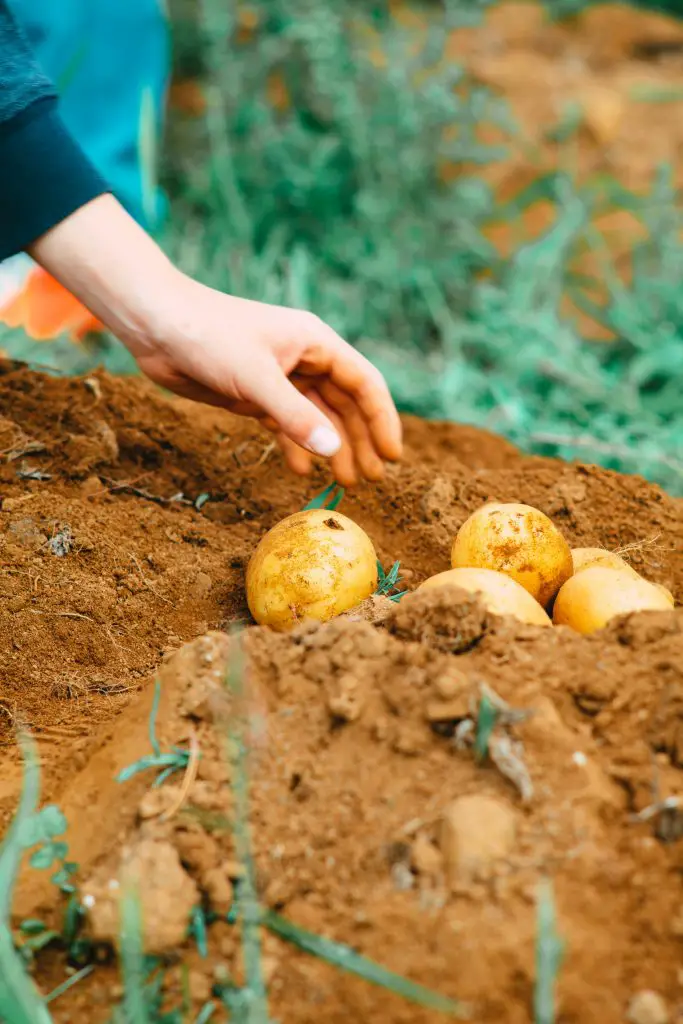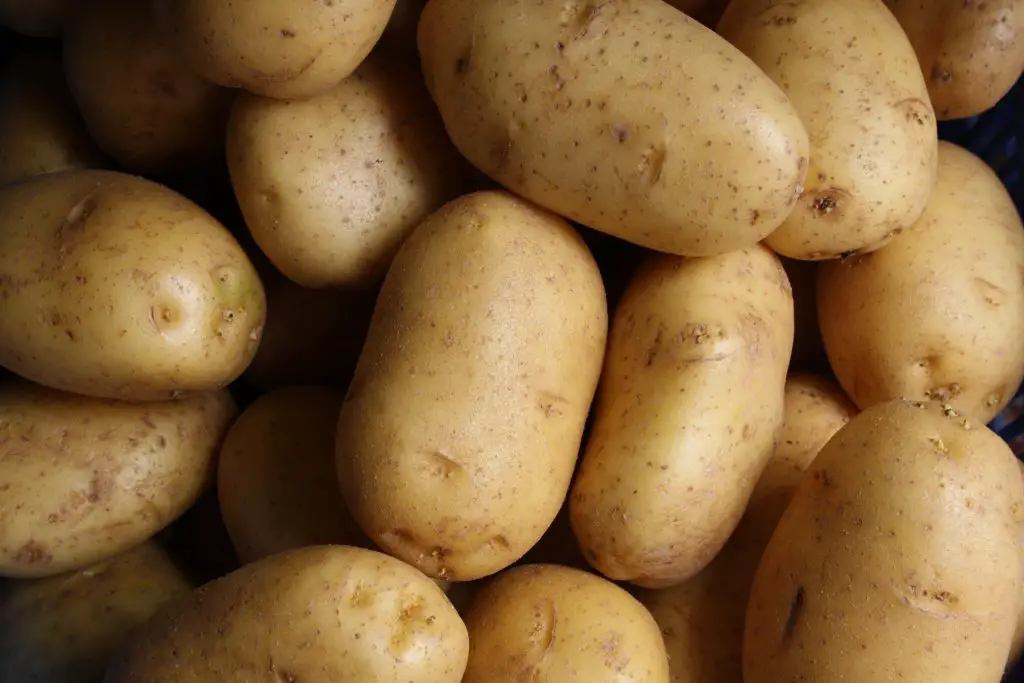How Late Can You Plant Potatoes? Potatoes are one of the most popular vegetables to grow in the garden as they are easy to grow and produce a large crop. Most gardeners generally try to start the potatoes off as early as possible in the season and usually plant potatoes a couple of weeks before the last frost of winter. But what happens if you miss the boat? What is the latest you can plant potatoes?
The absolute latest that potatoes can be planted is late July if you live in the northern hemisphere. The limiting factor in most cases is the date of the first frost as it will damage the potatoes’ foliage and prevent the potato tubers from swelling any further. You can limit this effect by growing potatoes under row covers or alternatively growing them in bags or pots that can be brought undercover.
If you don’t have a row cover that is suitable I would suggest trying the Growsun Garden Tunnel Plant Cover, which is available on Amazon because it is relatively tall and will be large enough to accommodate mature potato plants. Additionally, it has relatively long hoops that can be anchored deeply into the ground. This is important as conditions in many locations can become windy as the seasons begin to change. The product is shown in the image below.

Using row covers will not only prevent the plant from being affected by frost it will also increase the temperature of the surrounding soil and air which will help to increase the growth rate of the plant.
However, despite these measures, which will help, you can expect the potato yield to be significantly lower than what otherwise might be expected simply because the plants have not spent as long in the ground.
How Many Potatoes Can You Expect?
The yield of potatoes you can expect will be dependent upon your specific conditions and the particular variety that you choose to grow. However, by comparing what a normal yield of potatoes would be if they were planted at the ideal time we are able to give some indication.
The normal yield varies depending upon the type of potatoes grown. Early potatoes, which are sometimes referred to as first early potatoes, are potatoes that are harvested earlier in the season and generally produce much smaller yields than maincrop potatoes which are left in the ground longer.
Under normal conditions, early potatoes would typically yield around 1 lb (500g) if they were grown in a bag, whereas main crop potatoes would typically yield 4 lbs (2 kg) per seed potato planted. To see information on the particular varieties that yield the best click here.

As early potatoes are generally harvested much early than maincrop potatoes the yield that is achieved is not affected to the same degree as main crop potatoes. If you are really lucky you can get a yield that is similar to what you would otherwise get or at least three quarters of the normal yield.
In the case of maincrop potatoes, I would expect to see a yield that was half to three quarters the size of normal yield or 2 to 3lbs.
What Can Be Done To Maximize The Potato Yield?
There are two main strategies that can be applied to potato plants to help increase the yield when they are going in late in the season. The first, which was mentioned earlier in the article is to apply a row cover to the plants as that will increase the temperature and therefore the growth rate.
The second method, which works well irrespective of whether the seed potatoes are put in early or late, is earthing the plants up with soil. This process works by encouraging the formation of additional roots from the stem which increases the number of tubers created.
Additionally, earthing up extends the period of time that the tuber spends underground which increases the size of the tuber. To read more about academic studies that have looked at this specific aspect click here.
How To Grow Potatoes
As mentioned earlier in the article, potatoes are a relatively easy vegetable to grow. When planting it into a garden most gardeners start by digging a trench that is typically half a foot to a foot deep (15 to 30cm). To ensure that the potatoes have sufficient nutrients it is advisable to add either compost or well-rotted manure along the base of the trench.
Seed potatoes can then be placed along the base of the trench approximately 1 ft apart. The seed potatoes should then be covered up with soil. It will typically take between 2 to 4 weeks for the plants to begin to emerge. At this stage, it is advisable to allow the plant to reach a height of 4 to 6 inches before earthing up the potato plants.

When earthing the plants it is important to ensure that the top of the plant is still exposed to light to ensure that the plant can continue to photosynthesize. This process may need to be repeated a couple of times as the plant gets taller.
Once the plant is starting to flower it is approaching the point where it is ready to harvest. Ideally, the plant should be left to flower for around 4 weeks before harvesting commences. At this point, it is advisable to only harvest one plant to check that the yield is reasonable, if not the plant can be left for longer, weather permitting.
The potatoes can remain in the ground until you need them up until the point where the plant completely dies back or is severely damaged by frost. At this stage, the potatoes will not get any larger and should be removed from the ground.
Potatoes can be stored for an extended period of time in a cool dark location. Ideally, the tubers should be stored in a cardboard box or a hessian sack as this will allow air to flow. Without adequate ventilation, the potatoes can sweat and have the potential to grow mold.
Related Articles
Can You Cut Seed Potatoes in Half?
Can I Plant Store Bought Potatoes?
What Are The Best Potatoes To Grow In Bags?
Can You Plant Old Potatoes That Have Sprouted?
Does Earthing Up Potatoes Improve Yield? Is It Worth Doing?
How Much Sun Do Potatoes Need? Does The Yield Fall In Shade?
Are Potatoes A Root Vegetable?
Can You Compost Potatoes? Or Will They Start Growing?
